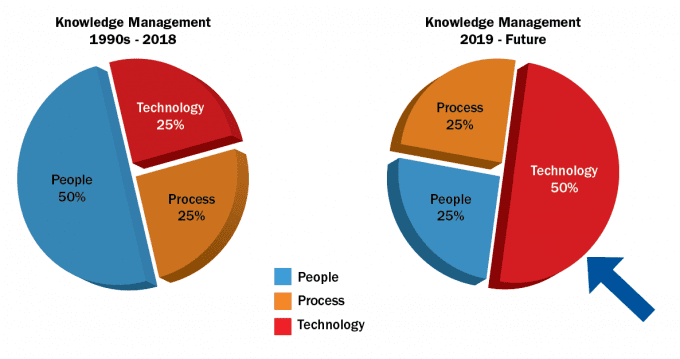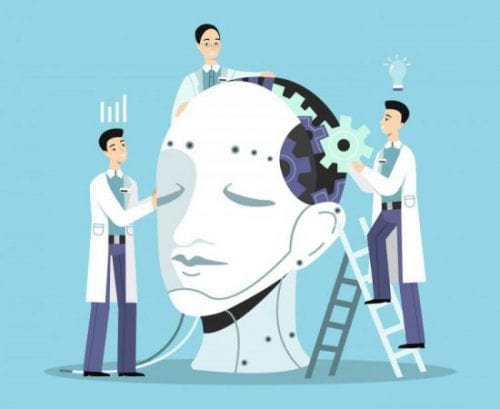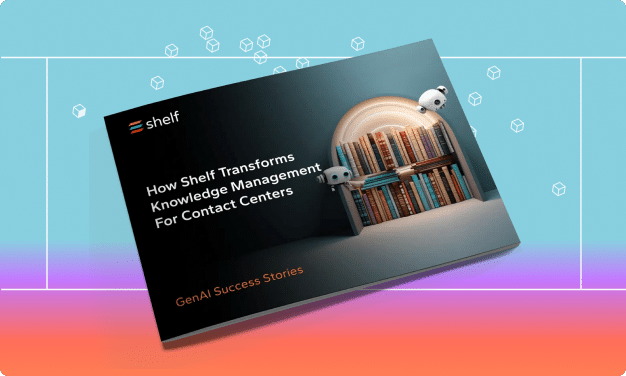Artificial intelligence is disrupting the traditional role of knowledge sharing in contact centers and reducing the burden on humans to make Knowledge Management Systems effective.
It’s a well-known fact that customers hate to wait. In a recent survey on consumer attitudes, researchers discovered that 35% of the respondents stopped doing business with some of their favorite brands after just one episode of waiting too long for a customer service agent to resolve their issue.
In light of these facts, it’s little wonder that average handle time (AHT) is a leading indicator of the success of many contact centers. With the question of how to reduce average handle time agents invest in finding solutions to customer problems, contact center managers have introduced a range of training programs and procedural upgrades. However, these attempts continue to fall short. So we’ll review some of the things that aren’t working in 2019, and how AI can make some of these problems a thing of the past.
Common Initiatives that Plug the Hole but Don’t Solve the Problem
When dealing with subpar AHT, managers often lean on HR intensive solutions. One option is to hire more agents. However, high churn rates can drain budgets and still leave managers without enough personnel to fill their schedules.
A second option is investing in additional training, as it can help improve an agent’s ability to navigate systems and find answers. Unfortunately, it’s a challenge to find the necessary time for training, while keeping the phone lines adequately staffed.
On-floor coaching is another solution for resource-weary managers. With seasoned employees patrolling the floor, making themselves available to answer questions and offer guidance, call quality and duration does improve. But taking your most senior agents off of the phones could leave you struggling during surges in activity.
While these techniques do offer some improvements, they only offer temporary relief of a deeper issue. The biggest hurdle to lowering AHT lies in being able to connect customer questions to agent answers. The time agents spend asking questions, researching, and reviewing information to find the solution customers need is the most controllable aspect of AHT. The good news is that new technologies and processes have evolved over the past couple of years that make knowledge management different in 2019.
That’s why getting a handle on your department’s knowledge resources right now is the biggest lever to making a long-lasting impact on AHT.
AI is Disrupting the Knowledge Management Space
The traditional role of knowledge sharing in contact centers is being disrupted by AI as four major trends are merging driving irreversible change:
- The maturation of the cloud
- The next generation of big data & analytics
- Advancements in artificial intelligence
- New capabilities to automate knowledge discovery
Knowledge tasks that used to require a great deal of overhead and maintenance are increasingly being replaced by technology. The chart below depicts how the burden on people to “manage” knowledge is shifting to automated, intelligent technology.

Traditionally, the Achilles Heal of KMS was the time-consuming, maintenance tasks that an analyst or manager needed to perform to keep the system up-to-date and accurate. They often needed to perform these tasks along with a multitude of other time-sensitive activities that had a higher priority.
Another major issue with the traditional management of knowledge was that it was difficult to measure the effectiveness of the overall program. No one could answer questions as to what content was the most important, what searches were working and which ones were not, what the best performers were doing differently, and whether the overall system was helping or hurting performance. This lack of ROI and clear metrics has lead to the failure of many past KM initiatives.
AI Changes the KMS Game Reducing Handle Times and Improving the Customer Experience
The current disruption in KMS technology enables many of the human-driven tasks of managing knowledge to be transferred to artificial intelligence. It significantly reduces administrative overhead and exponentially increases the effectiveness of a small number of people to improve the flow of knowledge in the CX department. Another benefit of AI is that it opens up the black box of agent activity and provides transparency into the entire system through analytics and automated suggestions.
The bottom line is that AI reduces the need to ramp up HR, training programs, and coaching programs. The introduction of AI/Automation/Analytics has the following impacts:
- Supports and empowers admin users through easier administration and maintenance
- Supports and empowers agents to more easily find what they need
- Supports self-service via chatbots to learn faster and handle more complex questions
- Reduces the burden on people to make KM effective
Implementing an AI-based KMS can be done in as little as a month and can have huge impacts across the contact center. Recently, a financial services company experienced a 15% reduction in new staffing needs and a major insurance company saw AHT reduced by 30% in the first 90 days.
Click here to read about the upcoming challenges and opportunities for Contact Centers.




